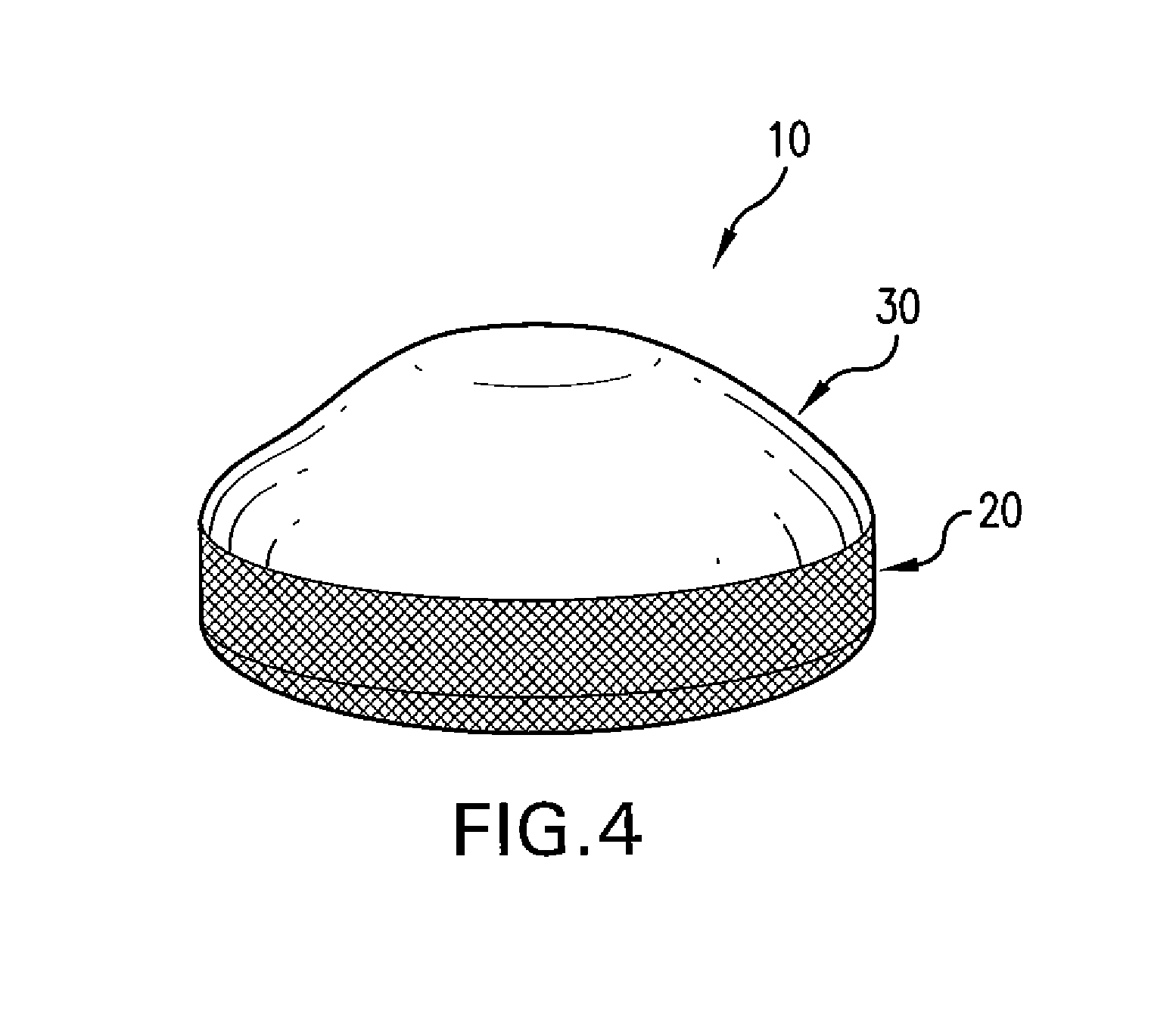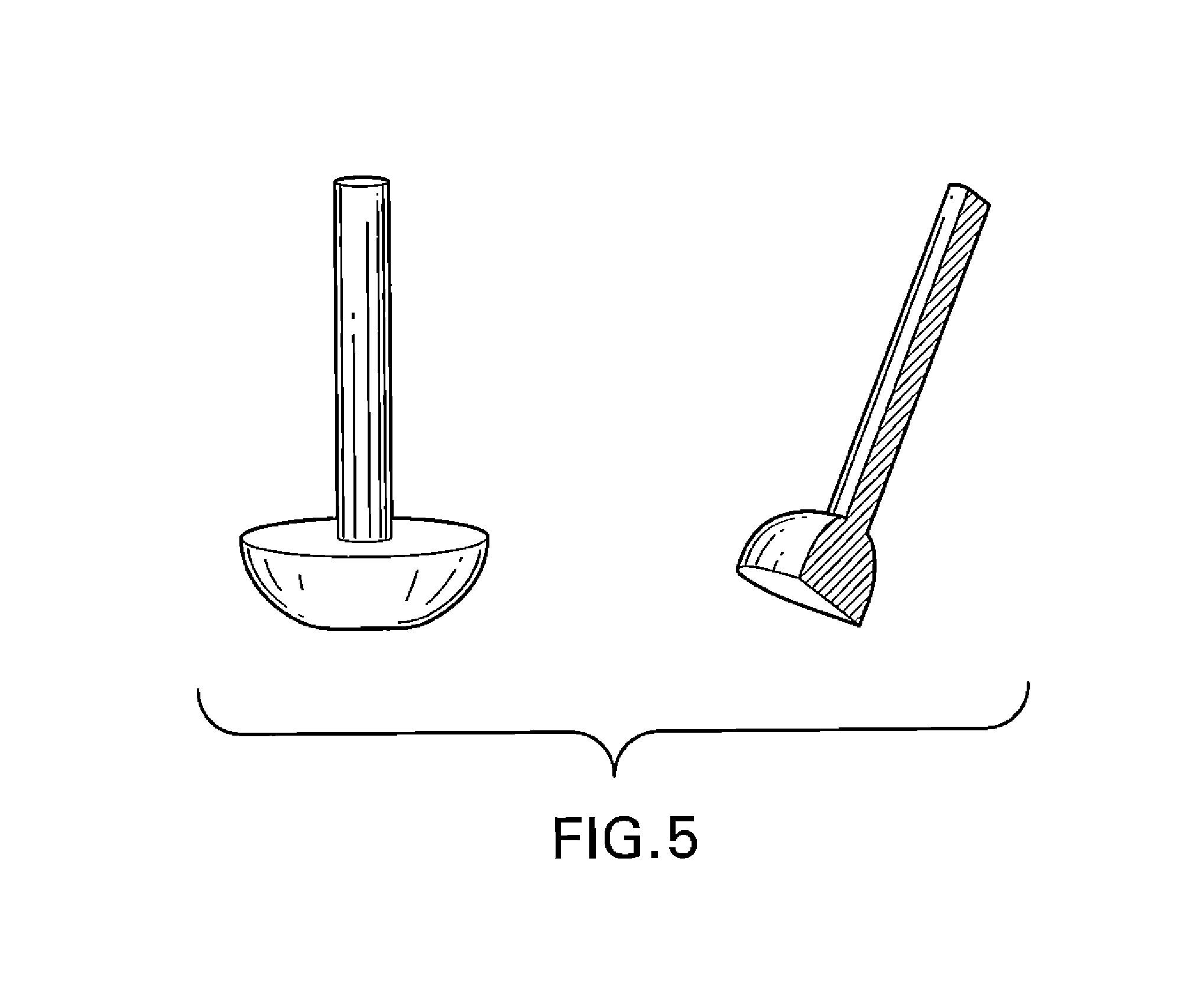Biodegradable, polymer coverings for breast implants
a breast implant and polymer technology, applied in the direction of prosthesis, peptide/protein ingredients, antibacterial agents, etc., can solve the problems of hematoma and pain, excess scar tissue around the implant, hematoma and pain, etc., to inhibit or reduce the formation of scar tissue, inhibit or reduce the effect of capsular contractur
- Summary
- Abstract
- Description
- Claims
- Application Information
AI Technical Summary
Benefits of technology
Problems solved by technology
Method used
Image
Examples
example 1
Polymer Synthesis
[0115]The polymers used in Examples 2-5 and 9-11 are listed in Table 1 and the structures thereof are shown in FIG. 6.
[0116]
TABLE 1BlendPolymer 1Polymer 21p(DTE:15% DT-co-succinate)p(DTE-co-(50:50 PEG 600acid:adipate))2p(DTE:10% DT-co-adipate)p(DTE-co-(50:50 PEG 400bis-succinate:adipate))3p(DTE-co-(50:50 PEG 400 bis-p(DTE-co-(10:90 PEG 600succinate:adipate))acid:adipate))
[0117]These polymers, and tyrosine-derived diphenol polyarylate polymer in general, were synthesized as generally described in U.S. Pat. Nos. 5,216,115 and 5,597,507 using a carbodimide-mediated coupling reaction. Briefly, equimolar amounts of the diol and diacid were condensed in methylene chloride using diisopropyl carbodimide as the coupling agent in the presence of dimethylaminopyridine and paratoluenesulfonic acid catalysts. For those polyarylates which contain a free acid moiety, a similar synthesis was conducted followed by hydrogenation as described in U.S. Pat. No. 6,120,491. The polymers w...
example 2
Preparation of Breast Implant Coverings: Molding
[0119]Polymer blends were prepared by mixing 10 g of Polymer 1 and 10 g Polymer 2 from Table 1 in 180 mL tetrahydrofuran (THF) and 20 mL of methanol (MeOH) to yield a 10% (w / v) solution with the polymers in 1:1 ratio (w / w). After the polymers were dissolved, 1.1 g rifampin and 1.1 g minocycline were added to each solution and mixed well. Polypropylene or delrin molds in the shape of a breast implant were fixed onto a holder and dipped slowly into and slowly out of the solution using a dipping machine from DipTech Systems, Inc. Five dips were applied to each mold with 60 min intervals between each successive dip. The dipped molds were dried at room temperature for 24 h followed by drying in a 55° C. oven for 16 h. After drying, the molded polymer solution produced a breast implant covering that was easily peeled from the mold.
example 3
Drug Release Studies
[0120]Films of polymer blends were prepared for drug release studies by mixing 1 g Polymer 1 and 1 g of Polymer 2 from Table 1 in 15 mL methylene chloride. After the polymers dissolved, 0.2 g of rifampin and 0.2 g of minocycline were added and mixed well. The solution was poured onto a TEFLON coated glass surface and spread to 0.25 mm with a spreading knife. The film was covered by an aluminum foil wrapped glass dish and dried at room temperature overnight. The film was peeled off and put in an amber bag and dried in a vacuum oven at 25° C. for 3 days. The dried film was cut into small pieces of about 10 mg and placed into a 20 mL vial containing 10 mL of PBS. Aliquots of buffer were removed periodically for analysis and replaced with fresh buffer. Samples were analyzed by HPLC to determine the cumulative amount of released rifampin and minocycline.
[0121]With these blends, from about 40% to about 85% of the minocycline was released within 15 days and from about 4...
PUM
| Property | Measurement | Unit |
|---|---|---|
| Tg | aaaaa | aaaaa |
| Tg | aaaaa | aaaaa |
| volumes | aaaaa | aaaaa |
Abstract
Description
Claims
Application Information
 Login to View More
Login to View More - R&D
- Intellectual Property
- Life Sciences
- Materials
- Tech Scout
- Unparalleled Data Quality
- Higher Quality Content
- 60% Fewer Hallucinations
Browse by: Latest US Patents, China's latest patents, Technical Efficacy Thesaurus, Application Domain, Technology Topic, Popular Technical Reports.
© 2025 PatSnap. All rights reserved.Legal|Privacy policy|Modern Slavery Act Transparency Statement|Sitemap|About US| Contact US: help@patsnap.com



